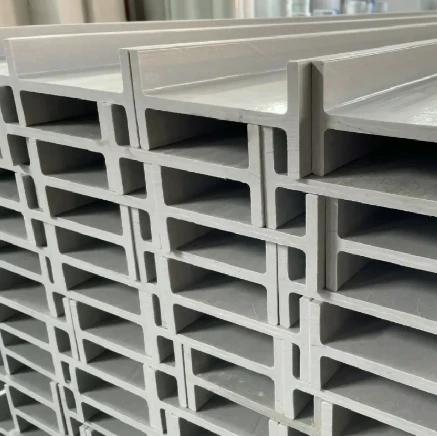loading...
- No. 9, Xingyuan South Street, Dongwaihuan Road, Zaoqiang County, Hengshui, Hebei, China
- admin@zjcomposites.com
- +86 15097380338
- Welcome to visit our website!
FRP Louvers Solutions for Enhanced Cooling Tower Efficiency and Performance
FRP Louvers for Cooling Towers An Essential Component
Cooling towers are critical components in industrial and commercial applications, responsible for dissipating heat from process equipment or circulating water systems. To enhance their performance and efficiency, the installation of louver systems is a popular solution. Among various materials available for louver construction, Fiber Reinforced Plastic (FRP) has emerged as a favored choice. This article explores the significance of FRP louvers for cooling towers, highlighting their benefits, applications, and distinct advantages.
Understanding FRP Louvers
FRP, or Fiber Reinforced Plastic, is a composite material that comprises a polymer matrix reinforced with fibers, typically glass or carbon. This combination results in a material that is not only lightweight and durable but also resistant to various environmental factors, including corrosion, UV radiation, and extreme temperatures. FRP louvers are specifically designed to facilitate air movement and enhance the cooling efficiency of cooling towers by allowing air to flow through while minimizing the ingress of unwanted debris or water.
Benefits of FRP Louvers
1. Corrosion Resistance One of the most significant advantages of FRP louvers is their resistance to corrosion. Cooling towers are often exposed to harsh environmental conditions and chemical attacks from water treatment agents. Unlike traditional materials such as wood or metal, FRP does not rust or corrode, ensuring a longer lifespan and reduced maintenance costs.
2. Lightweight and Easy to Install FRP is remarkably lightweight compared to other materials like steel or aluminum. This characteristic allows for easier handling and installation, which can significantly reduce labor costs and installation time. The lighter weight reduces the structural load on the cooling tower framework, making it a viable option for various applications.
3. Excellent Insulation Properties FRP exhibits good thermal insulation properties, making it an ideal material for louvers. By minimizing heat transfer, these louvers help maintain the efficiency of the cooling process, ultimately contributing to energy savings.
frp louvers for cooling tower

4. Customizability FRP louvers can be fabricated into various shapes and sizes to meet specific design requirements. This flexibility in design ensures that they can be integrated seamlessly into existing cooling tower structures or tailored for new installations.
Applications in Cooling Towers
FRP louvers are widely used in various cooling tower applications, including
- Industrial Cooling Towers In sectors such as power generation, pharmaceuticals, and manufacturing, FRP louvers are utilized to optimize the cooling process while minimizing maintenance efforts.
- Commercial Buildings Large commercial facilities, including shopping malls and office complexes, utilize cooling towers with FRP louvers to enhance indoor air quality and comfort.
- Wastewater Treatment Plants The application of FRP louvers in cooling towers at wastewater treatment plants allows for efficient heat dissipation while resisting the corrosive nature of wastewater.
Conclusion
In summary, FRP louvers are a vital component of cooling towers, offering numerous benefits including corrosion resistance, lightweight properties, and excellent insulation. Their versatility and customizability make them an ideal choice for various industrial and commercial applications. As the demand for efficient and durable cooling solutions continues to grow, the adoption of FRP louvers is likely to increase, further enhancing the operational efficiency and longevity of cooling towers. Investing in FRP technology not only promotes sustainability but also ensures reliable performance in critical cooling applications.
-
Transform Your Spaces with FRP Grating SolutionsNewsNov.04,2024
-
The Versatility and Strength of FRP RodsNewsNov.04,2024
-
The Excellence of Fiberglass Water TanksNewsNov.04,2024
-
The Benefits of FRP Grating for Your ProjectsNewsNov.04,2024
-
Elevate Your Efficiency with FRP Pressure VesselsNewsNov.04,2024
-
Welcome to the World of FRP Pressure VesselsNewsOct.12,2024
-
Unveiling the Future of Filtration: Why FRP Filter Vessels are a Game ChangerNewsOct.12,2024
